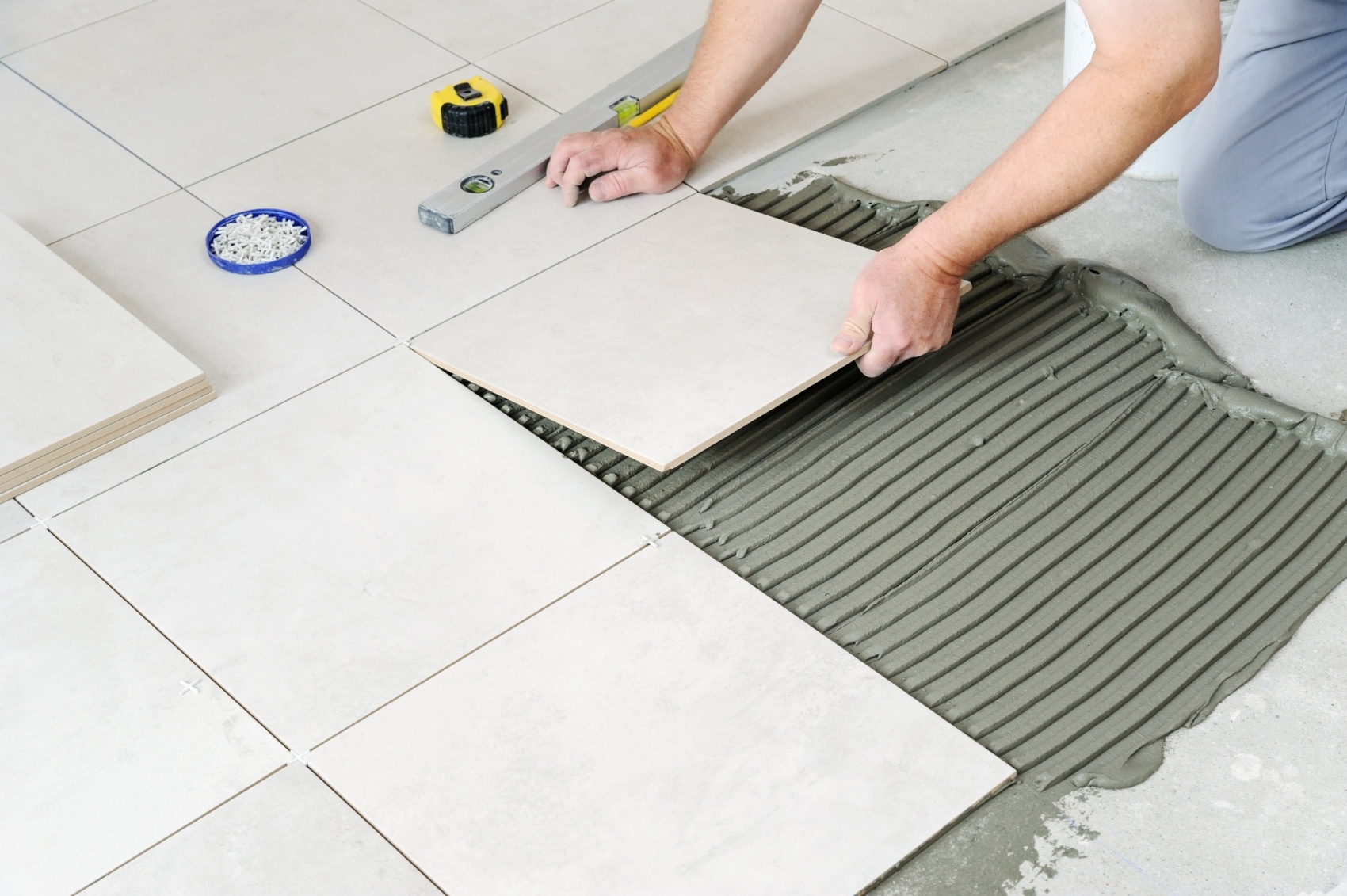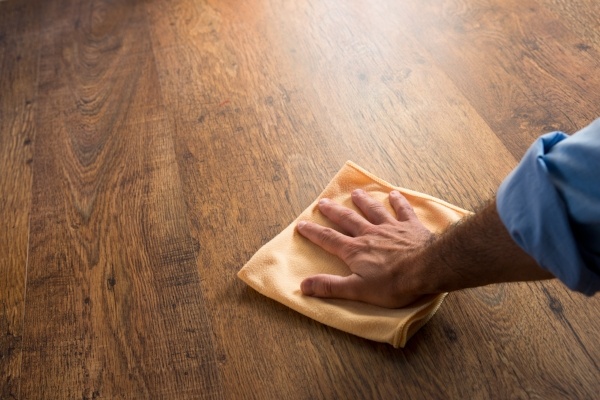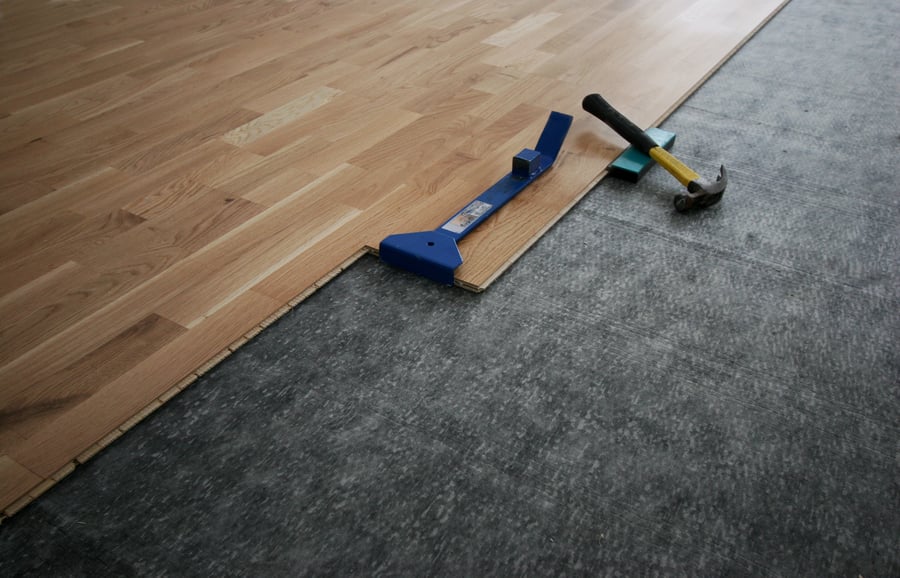Can Flooring Moisture Meters Be Useful for Installing Tile Floors?

Most flooring installation specialists are aware of the need for moisture testing in their wooden flooring. If left unmanaged, wood that is not in equilibrium with its surroundings can expand or contract as it gains or loses moisture. To this end, many professionals use flooring moisture meters to measure the amount of moisture in their wood flooring and thermo-hygrometers to measure the relative humidity conditions at the installation site.
Using these tools, flooring contractors can identify whether their wood flooring is at its equilibrium moisture content (EMC) value for the installation site. However, this is just for wood flooring materials. So, some might question the value of flooring moisture meters and thermo-hygrometers for installing other flooring—such as tile.
The truth is that there is a use for a moisture meter for tile flooring installation work. However, unlike when they’re used for wood flooring, moisture meters don’t typically get used to measure moisture in tile. Instead, they’re used to test subfloors and the surrounding environment.
Why Testing Subfloors with Flooring Moisture Meters Is Important
Tile flooring can be roughly divided into four categories depending on how well it resists water absorption:
- Non-Vitreous Tiles. These tiles are typically low-density and will absorb a fair amount of water (generally more than 7% of the tile’s weight in water).
- Semi-Vitreous Tiles. These are moderately dense tiles that do a better job of resisting water absorption (somewhere between 3% and 7% of the tile’s weight).
- Vitreous Tiles. These dense tiles do an excellent job of repelling water and will generally absorb less than 3% of their weight in water.
- Impervious Tiles. It would be easy to call these ultra-dense tiles “waterproof” since they will only absorb 0.5% or less of their weight in water. Most porcelain tiles would fall into this category.
Vitreous or impervious tiles are practically immune to the effects of water, while the more absorbent varieties (non- and semi-vitreous tiles) may, if left exposed to enough water for a long time, form cracks or other flaws. However, even if they’re working with impervious tiles, flooring contractors would be well advised to carefully monitor the moisture content of the subfloors beneath their tile.
Why?
Because, while the tiles themselves may be highly resistant to damage from moisture, the adhesives used to connect the tiles to the subfloor are another story. Excessive moisture can cause tile adhesives to fail, meaning the tiles won’t adhere to the floor correctly, creating unsightly gaps or creating a potential injury hazard from uneven flooring. This makes measuring flooring moisture in subfloors when installing tile just as important as measuring moisture in wood flooring.
Additionally, excess moisture in subfloors can help promote mold growth and attract invasive pests, such as termites, cockroaches, or rats.
Measuring Flooring Moisture for Tile Installation
When preparing to measure the moisture in a subfloor, there are a couple of different methods professionals might use depending on the type of subfloor they’re installing over. If the subfloor is a wood flooring system, then a wood flooring moisture meter can be used to quickly test the subfloor’s moisture content directly. If the subfloor is made of concrete, then additional testing may be required—especially if the subfloor was poured recently.
How can moisture be tested in a concrete subfloor to see if it has enough moisture to pose a threat to a tile flooring install?
If the concrete is well-established, meaning that it is at least several months old and has already been verified as ready by another professional using the ASTM F-2170 testing method, then a relatively fast surface check might be enough to verify if the moisture content of the subfloor is likely to affect tile adhesive. Two simple surface-level moisture tests include:
- Concrete Moisture Vapor Testing. The ASTM F1869 standard defines a method of using calcium chloride solutions to perform a qualitative assessment of the moisture near the concrete slab’s surface.
- Moisture Meter Testing. A moisture meter in reference mode can provide a qualitative assessment of the moisture on the concrete slab’s surface as well. If using a pin meter, drive two ductile nails into the concrete, then put the pins of the meter against the nails and take a reading.
It should be noted that both of these methods produce qualitative assessments of flooring moisture, not quantitative ones. To get an accurate assessment of moisture conditions deep in a concrete slab, it’s necessary to use the ASTM F-2170 testing method, which employs thermo-hygrometers with in-situ probes that go deep into the slab to monitor relative humidity conditions.
If you need help measuring flooring moisture, or finding the right tools for the job, contact the experts here at Delmhorst Instrument Co. We have decades of experience in helping professionals tackle their moisture measurement challenges with high-quality, reliable moisture testing tools.
Subscribe to Our Blog
Post Related

What’s the Ideal Moisture Content for Wood Flooring?


